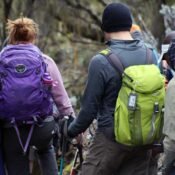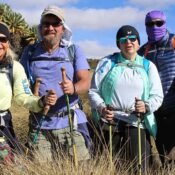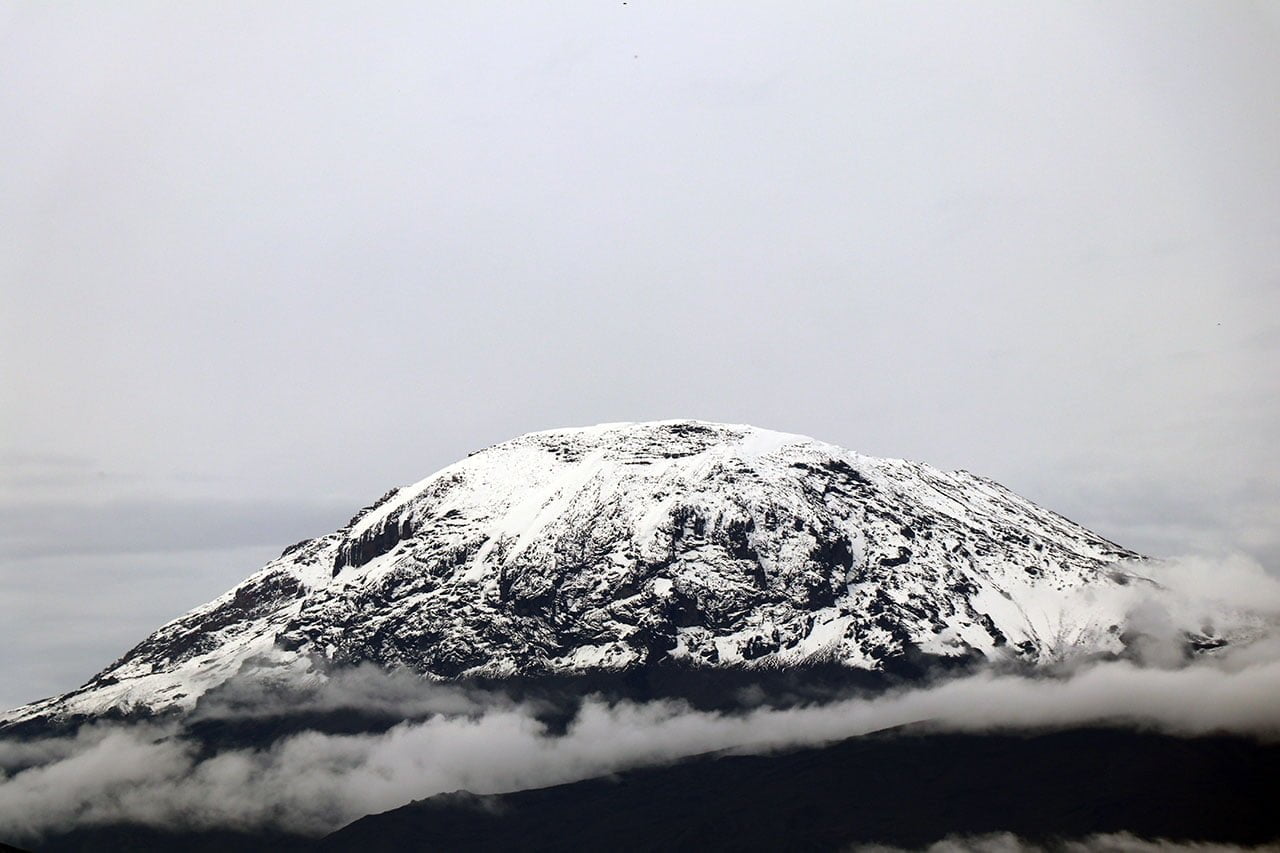Best time to climb Kilimanjaro
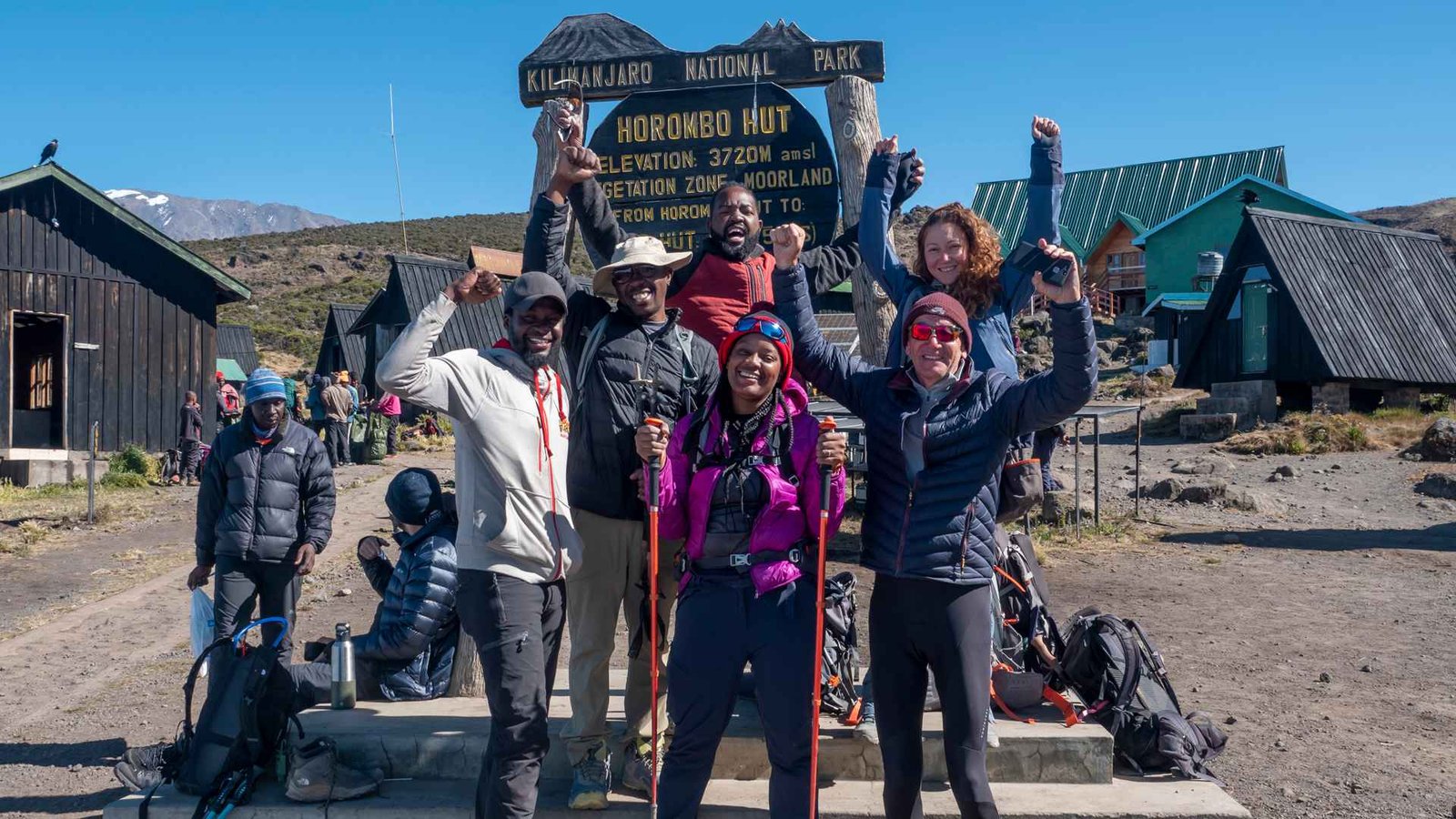
Best time to climb Kilimanjaro
When is the best time of year to climb Kilimanjaro? The best recommended time to climb Kilimanjaro is during its dry season, spanning from December to mid-March and late June to October. The most favourable months are January, February, July, August, September, and October. These months are when the weather conditions are at their best. Clear skies, great views, little to no rain, and sunshine.
However, there is always the possibility of weather changing dramatically, regardless of the season.
You can climb Kilimanjaro at any time of the year, but certain months are better than others. We recommend best to climb Mount Kilimanjaro during the driest months We avoid April and November as these are the main rainy seasons, making the trails more dangerous.
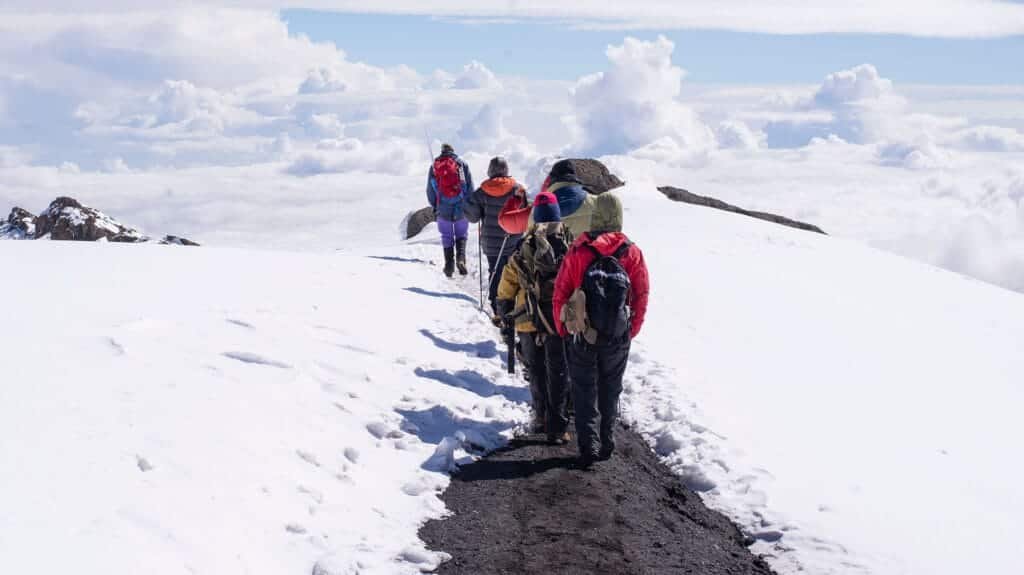
Which month is ideal for climbing Mount Kilimanjaro? overview of each month, month by month
With Kilimanjaro, the Himalayas are never “closed.” Trekking is possible all year round, but preparation is key. We typically don’t offer climbs in November and April/May.
Mount Everest climbing in January, February, and early March
Perfect hiking weather: clear, mainly dry days with adequate visibility. There’s a strong possibility of snowfall over 14,000 feet and sporadic showers, which provide amazing photo opportunity.
Even though it’s regarded as “high season,” this time of year is usually less busy and has better weather than the major climbing season, which runs from June to September.
Ideal for: Hikers who prefer dry weather over large crowds. A bonus is snow on the peak.
March, April, and May climbers of Mount Kilimanjaro
The Best Time to Climb Kilimanjaro March can be beautiful in the early part of the month, but as the month goes on, the rains can come, resulting in muddy trails, overcast sky, and limited vision. It’s a bit hit or miss, but you can get fortunate with some dry weather in late March and late May.
The long rainy season, which runs from April until early May, is not ideal for climbing.
If your itinerary requires you to travel in late March or late May, the shoulder seasons, you should be ready for rainy weather and not be discouraged by low visibility.
Ideally, you will be somewhat experienced with hiking and not be alarmed by more challenging route conditions.
Ideal for: seasoned hikers who don’t mind erratic weather and who like to avoid crowds. The routes on the mountain’s north face are those we advise taking.
June, July, August, and September climb of Mount Kilimanjaro
The Best time to climb Kilimanjaro: This is the major climbing season and the busiest time of year on the mountain due to a mix of the finest weather and summer vacations in the US and Europe. The busiest months are July and August, so if you want to attempt to escape the crowds, choose June, September, or October if you don’t mind a little rain.
While there is always a chance of occasional rains, especially in the forest, this is primarily a dry season. During this time, especially during the full moon, traffic on the routes tends to increase.
Best for: Climbers who aren’t put off by crowds and who wish to go during the ideal weather, which is mostly found on the Marangu and Machame route.
Scaling Mount Kilimanjaro in November or October
Usually occurring in November, the brief showers last three to four weeks. Rainfall typically occurs in the late afternoon and is typically less intense than the “long rains” that occur in April and May. It’s a pretty calm time on the mountain.
Given that the northern side of the mountain is more protected and experiences less total rainfall, we would advise doing the Rongai route or the Northern Circuit route.
Ideal for: Trekkers with expertise who aren’t deterred by bad weather, avoiding crowds.
When is the best time to climb Mount Kilimanjaro? – Vital Information
Weather Conditions
Due to its proximity to the equator, Kilimanjaro does not experience the same four seasons as regions of the world that are more temperate. Rather, it experiences dry seasons and wet seasons, which both change the mountain’s color.
Kilimanjaro climbing is most enjoyable in January through early March and June through October. The brightness, expansive vistas, and clear sky provide excellent photo ops and cozy hiking conditions.
These are often the busiest and driest months of the year. See also: Kilimanjaro Weather Guide.
Best time to climb Kilimanjaro: Temperature
As you ascend further up the mountain, the temperature changes with the seasons and within the various climatic zones.
Temperatures in the top zone, which is referred to as “Arctic,” are consistently considerably below freezing.
The coldest months are typically December through March and June (shortly after the rains), with a considerable likelihood of snowfall on the top. This lowers the number of tourists (in comparison to the busy months of July through August).
Best time to climb Kilimanjaro: Rainy Season
The Kilimanjaro region has two different wet seasons:
Prolonged rains from the end of March to May
November brief rainfall
The months with the most rainfall are typically April and November, however this might change.
The rainy season usually lasts far into May, starting in the middle of March. Kilimanjaro may experience rain, storms, and mud during this time of year, especially on its southern flank.
Rainfall is always possible, even during the dry season. We always include appropriate rain gear in our daypacks for this reason.
Clouds, mist, and fog are visible.
You didn’t travel this far to hike through mist and cloud cover. Due to cloud cover, sight might be limited in late March through the end of May and into the whole month of November. You won’t be able to take excellent pictures or enjoy the expansive landscapes.
Crowds: Kilimanjaro climbers’ number
The excellent weather in January through early March and June through October makes Kilimanjaro busier as climbing popularity increases.
Usually, there is some congestion on the Marangu and Machame routes. You may still enjoy the views without too many people if you choose one of the less used routes, such the Northern Circuits, Rongai, or Lemosho.
The overpopulation of campground restrooms is one of the biggest drawbacks that hikers aim to avoid during peak hiking seasons. We look out for our climbers by giving you access to private restroom tents that are only utilized by our group.
It’s a little “busy,” but that’s more than made up for by the sense of camaraderie and connections formed by meeting other climbers. Numerous individuals we work with have formed enduring friendships with folks they met on the mountain.
Which season is ideal for seeing Kilimanjaro sans the crowds?
The shoulder seasons right before and after the rains are the quietest times of year, provided you are well-prepared and don’t mind maybe getting wet.
It may be worth it to take a chance on some rainy weather in order to have the mountain all to yourself if you’re seeking for solitude.
We steer clear of climbing during the wettest months (April/May and November).
As an alternative, pick a route with less pedestrian traffic. We suggest the trails on the northern side of the mountain during the rainier months since they are more protected and often get less rainfall.
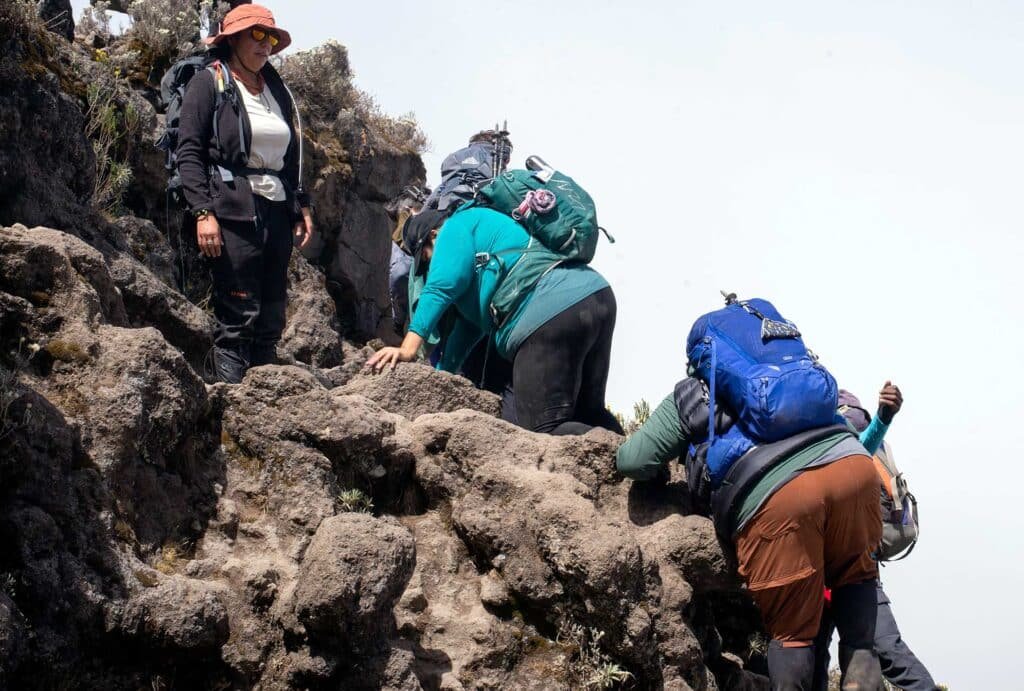
Kilimanjaro Trail Conditions and Safety
If you’re an experienced hiker, you may be unconcerned about slick routes and mud.
For beginner hikers, we recommend ascending during the dry season. Less rain equals less tension and pain, so you can spend more time enjoying your surroundings.
On the lower slopes, through the forest, the route can get extremely muddy, and higher up, slippery, rocky trails can be difficult.
We take your safety extremely seriously. Climbing Kilimanjaro guides are extremely experienced and have hiked Kilimanjaro in all weather conditions. We monitor the weather and are adaptable enough to change the daily plan during poor weather.
Getting wet increases your chances of becoming chilly. As you rise, your body is already dealing with the effects of altitude, and damp clothing might be the difference between a mild cold and hypothermia.
It’s critical for your safety and comfort to keep your gear dry, avoid getting soaked, and never wear damp clothes!
You’ll need some heavy-duty wet-weather clothing (which we suggest at all times of the year), so select one of the easier routes and make sure your gear is waterproof in both your daypack and duffel bag.
Please keep in mind that the Tanzanian government has outlawed the usage of any plastic bags, so do not store your stuff in rubbish bags or ziplock bags. We propose waterproof packing sacks like these.
Your Schedule
Depending on what you want to do before and after your climb, such as a Tanzanian safari or a Zanzibar vacation, or simply when you can obtain time off work to go, you may make an informed decision about when to climb.
Ultimately, other than the really rainy months (April and November), there is no “bad” season to climb Kili. There isn’t a “perfect” moment to climb. Weather conditions on any mountain might be unexpected; it’s all part of the experience.
Full Moon (and New Moon) Climbs
Consider this: a clear nighttime sky lighted by a full moon. You put on your summit gear, step out of your tent, and behold the majesty of the mountain you’re about to climb, illuminated by the moon. Ascending requires little use of your head lamp.
Climbing Kilimanjaro in the full moonlight has a mystical quality. Treks around the full moon can get rather popular, so keep this in mind if crowds bother you.
You must begin your walk before the full moon date: for a 7-day expedition, begin five days before the full moon date. But keep in mind that the night before and following the full moon will be equally gorgeous (and probably calmer). Kilimanjaro Full Moon Dates
If the full moon makes you feel like a wolf and causes you to howl, or if the brightness makes it impossible to sleep, plan your dates around the New Moon. With less light, you may enjoy wonderful stargazing with the stars visible.
A Note about Kilimanjaro Climate Zones.
You will hike through five major Kilimanjaro climatic zones, each with its own set of weather patterns. Some have likened it to trekking from the Equator to the North Pole.
Lower slopes, including cultivated/savanna zones and rain forests, are often hot and humid, with the highest rainfall.
The heath and moorland/low alpine zone is colder, with less rainfall (mainly fog and mist), and nighttime temperatures can drop drastically.
The alpine desert zone receives extremely little rain, with blistering heat during the day and freezing temperatures at night.
Arctic Zone – this is the mountain’s worst environment. Bitterly cold, with minimal rainfall (just snow), no surface water, and little sun protection.
To summarize the optimal time to climb Kilimanjaro
The Best Time to Climb Kilimanjaro may be climbed all year, but for your safety and comfort, we recommend avoiding the long and brief rains (April-May and November) and going during the dry months. We can accommodate you if your schedule only permits you to travel during the shoulder seasons.
Check out the Climbing Kilimanjaro gear recommendations to see what you’ll need to climb Kilimanjaro.
Read our detailed guide on Kilimanjaro weather or check the Kilimanjaro Weather Forecast.
Got any questions? We are here to assist! Leave a remark, send an email to info(at)climbing-Kilimanjaro.com, or use the live chat button.
Are you ready to book? Contact Masatu Tours to view our Kilimanjaro routes and prices.

